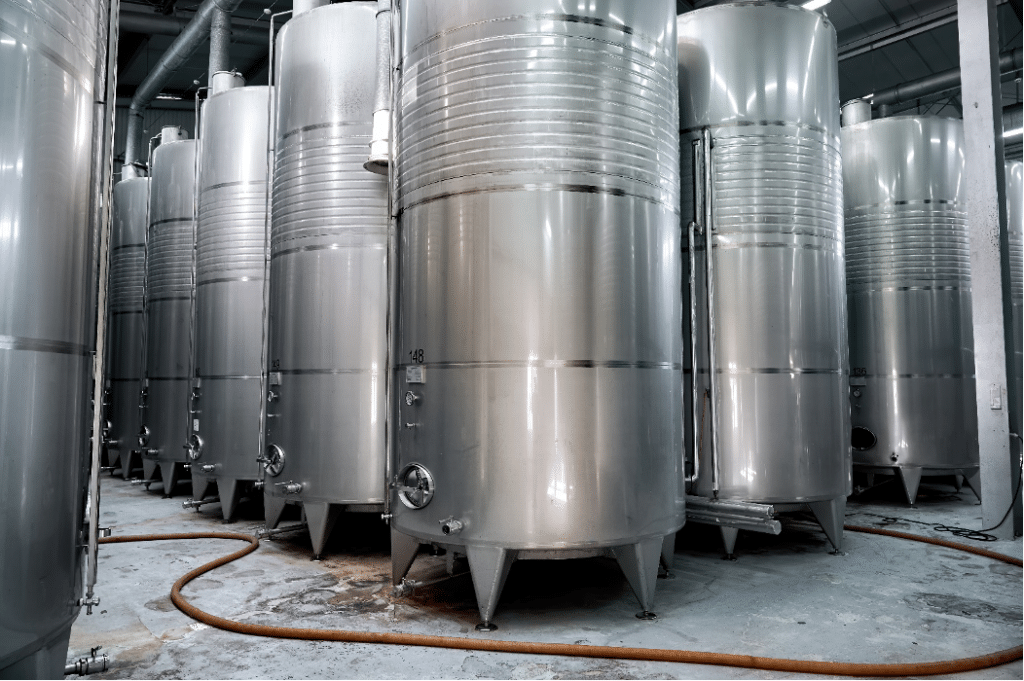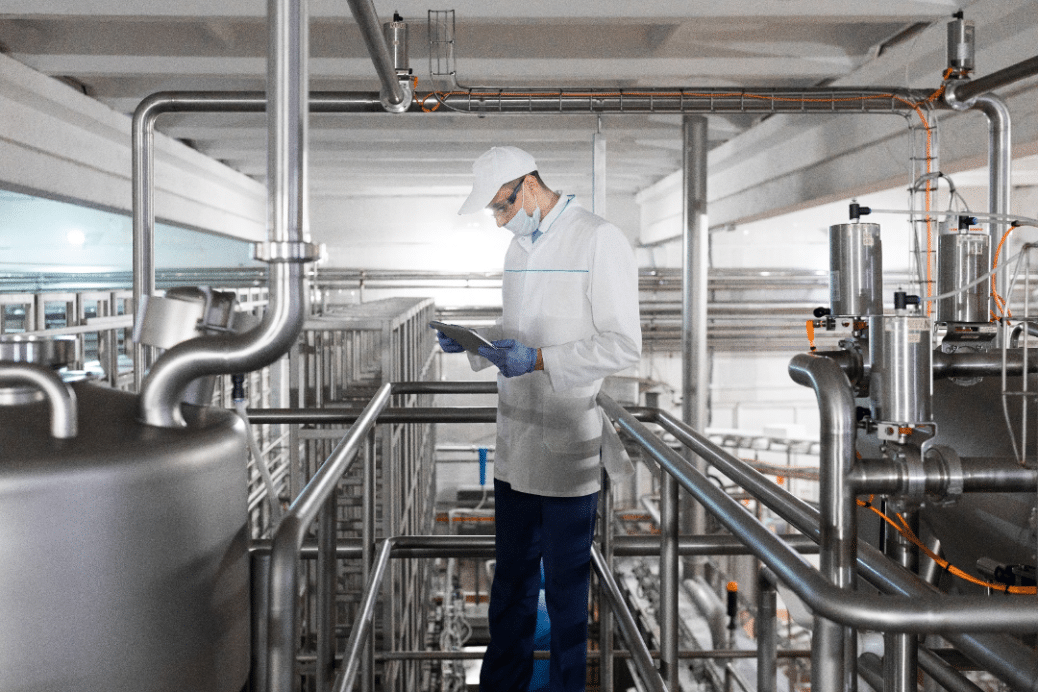What is pressure vessel testing? Why do we need to test pressure vessels? Well, that’s a common question that arises in mind when we think about pressure vessel testing. A pressure vessel inspection also known as a Boiler inspection is a safety check to make sure that pressure vessels are safe to hold liquids and gases under pressure. Pressure vessel inspection helps to prevent boiler or pressure vessel failure that can lead to damage to property, business reputation, and loss of life. To maintain a high quality of safety and compliance with industry standards, inspections, and regular testing are essential. This article explores the importance of pressure vessels and boiler inspection with a particular emphasis on API 572 and API 510 standards.
Objectives of Pressure Vessel Testing:
Safety Assurance: The primary objective of pressure vessel testing is to ensure the safety of personnel, belongings, environment, and surrounding types of equipment by identifying potential risks, defects, weaknesses, and irregularities.
Reliability Enhancement: Pressure vessel testing helps to maintain the reliability and efficiency of pressure vessels by detecting issues before they escalate, and minimizing downtime time of unplanned events.
Types of Pressure Vessel Testing:
We used two methods mainly to test the pressure vessels to ensure safety and compliance within an enclosed system.
Non Destructive Testing (NDT) Methods:
- Visual Inspection (VI):
Purpose: The purpose of visual inspection of pressure vessels is to identify the risks that can cause damage to the vessel and to identify the surface defects, irregularities, and signs of corrosion.
Process: This type of inspection is done by experienced personnel by using the naked eye, aided by tools like flash lights, mirrors, and bore-scopes.
- Ultrasonic Testing (UT):
Purpose: The purpose of ultrasonic testing is to detect internal flaws in pressure vessels, the thickness of materials, measurements, and evaluate the material’s sound.
Process: In this method, we use high-frequency ultrasonic sound waves that are transmitted through the material, and reflections are analyzed to identify damages and defects.
- Magnetic Particle Testing (MPT):
Purpose: The purpose of magnetic particle testing of a pressure vessel is to identify surfaces and near-surface defects like cracks and discontinuities.
Process: In this method, we use magnetic particles that are applied to the surface of the pressure vessel surface, and interaction between the magnetic fields is recorded using devices that highlight defects.
- Radiographic Testing (RT):
Purpose: The purpose of radiographic testing is to reveal internal structures, defecting detects, weld quality, cracks, and inclusions.
Process: In this method of radiographic test of pressure vessel gamma rays or X-rays are passed through the material and resulting images and graphs are analyzed for any irregular deformities present in the material.
- Eddy Current Testing (ECT):
Purpose: Eddy’s current test purpose is to detect surface defects, thickness measurements, and conductivity testing.
Process: In this method of Eddy current testing, electricity or Eddy current is passed through the material, and variations are analyzed to test the pressure vessel.
- Liquid Penetrant Testing (LPT):
Purpose: The purpose of the Liquid penetrant test is to check leakages of liquid, surface breaking defects and discontinues within any pressure vessel.
Process: A penetrant is applied to the surface of the pressure vessel and after a period it is removed through the surface, if a crack is found it penetrates that crack and reveals the number of cracks and deformities within the system.

Destructive Testing Methods:
- Pneumatic Testing (PT):
Purpose: It is the most common method of checking the Pressure vessel trough applying or inserting air or inert gases through applied pressure.
Process: The pressure vessel is analyzed by applying high-pressure gases and any deformities or leakages are monitored with time.
- Hydrostatic Testing (HT):
Purpose: It is also widely used in testing pressure vessels through applied pressure by using water or liquid to check the leakages or cracks within the pressure vessel.
Process: Water or any liquid is injected into the pressure vessel through applied pressure and any deformities or cracks are monitored.
- Charpy Impact Testing:
Purpose: The purpose of Charpy impact testing of a pressure vessel is to assess the material toughness and resistance to brittle fracture.
Process: In this method, a notched specimen is subjected to impact loading, and the energy absorption rate is measured at the time of impact.
- Tensile Testing:
Purpose: By using this method of testing we are testing the tensile strength of the pressure vessel material by evaluating the tensile strength and ductility of the material.
Process: The boiler pressure vessel specimen is subjected to tension until the material breaks or deformities start propagating within the material and the stress-strain concept is analyzed.
- Fracture Toughness Testing:
Purpose: In this method of testing we are studying the material’s ability to resist crack or deformities propagation through the material by using special tools.
Process: The desired specimens are loaded under a controlled environment and controlled loading to monitor fracture behavior.

Regulatory Standards and Codes:
Standards and codes are implemented in industries where pressure vessels are being used in manufacturing materials. Standards such as ASME Boiler and pressure vessel code, API 510, and API 572 provide guidelines for design, construction, and inspection methods.
Frequency of Testing:
The frequency of boiler pressure vessels highly depends on multiple factors such as service conditions, materials, and applicable regulations. Regular inspections are often based on intervals to meet the standard requirements of regulatory conditions and are essential for identifying issues that may cause future damage.
Documentation and Reporting:
A complete documentation report is compulsory regarding testing procedures and after results and any necessary actions are crucial for regulatory compliance and continuous improvements. Study shows that major accidents happen when there is no method of documentation and proper reporting procedures. Historical data and proper documentation are required to avoid such accidents in the future and to overcome these types of problems.
In conclusion, pressure vessel testing is a multifaceted process that combines various non-destructive techniques and destructive techniques to ensure proper safety compliance and reliability. By taking proper measurements and safety parameters industries can overcome damages, cracks, and losses that cost to property and lives of workers and maintain a safe system of work within the organization.

YENA Engineering stands as a trusted partner in this crucial endeavor, offering comprehensive solutions to meet the highest industry standards. YENA Engineering is committed to ensuring compliance with regulatory standards, including ASME Boiler and pressure vessel code, API 510, and API 572. Our tailored approach considers the unique requirements of each client, providing regular inspections based on specific service conditions, materials, and applicable regulations. Choose YENA Engineering for top-notch safety and compliance in pressure vessel testing.


